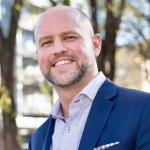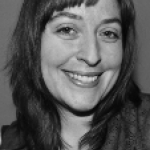
Tim Mikulski



 Kevin Clark
Kevin Clark
Last month I attended the first XOXO festival in Portland, OR. The event was intended to bring technologists and artists together to explore new ways of working that are possible on the internet. Most of the attendees work in the tech sector, but a few brave artists decided to attend. I, for one, am very glad that they did. Artists need to be a part of this discussion.
There is a lot that the arts and technology sectors can learn from each other, about developing an audience, about transformative experiences, and about how to communicate with large groups of people. There are lessons to be learned on both sides, and I look forward to future events that can bring these worlds closer together.
A New Role: Community Manager
The role of community manager is a great example of something that we in the arts can learn from the technology sector. The job title has sprung into existence in the last few years, primarily at consumer facing tech start-ups.
These companies need to develop and serve a base of users for their products, and the community manager’s job is to understand the needs of that community, to talk to them, and to connect their needs with the development of the core technology product.
Inside the company, the community manager’s role is to speak for the users. There’s a single person responsible for understanding and representing the needs of everyone who doesn’t work at the company. Because of that structure, there’s always someone in meetings who can talk about the experience of the people you serve. And if the community doesn’t have the answer you need ready, it’s their job to find it, and make sure it’s part of the company’s process.
These structures for tech companies on the social web have emerged organically along with the companies themselves.
Read More




The Arts & Economic Prosperity IV report comes at an interesting time for Portland as we prepare to launch a campaign for a transformational arts funding measure that’s headed for the November ballot.
If approved by voters in November, a new income tax capped at $35 per person will raise $12 million per year to support arts organizations and arts education in the City of Portland. Specifically, the measure would restore 65 arts specialists in elementary schools and allow our local arts agency to provide general operating support for about 50 leading arts organizations at a rate of at least five percent of their operating budgets. (Our largest organizations currently receive about one percent of their budgets from local public support).
The measure would also help our Regional Arts & Culture Council set up a fund to increase access to arts and culture, specifically within communities of color and underserved neighborhoods.
The Creative Advocacy Network (CAN) is leading this initiative, and even the most recent polls have been strong, earning 75 percent approval of the actual ballot language among likely voters; we are cautiously optimistic about our chances for success.
However, inexplicably, our local newspaper recently published an appallingly ignorant editorial that dismisses the notion of public funding for the arts, and value of arts education in particular. We’re not quite sure what rock they’ve been living under, but we know they don’t represent the opinion of the vast majority of Portland residents. The letter writing campaign to enlighten them has begun! (Thank you, Bob Lynch, for your letter.)
We’ve also done polling to make sure we understand which messages are most likely to resonate with the voters, and we found that economic impact was not very high on the list. The fact that our local arts organizations constitute a $253 million industry, supporting 8,529 full-time equivalent jobs and generating $21 million in state and local government revenue was deemed “persuasive” by slightly less than half of the likely voters we surveyed.
Read More

Since I started my job 4 ½ years ago, I have been looking for a way to quantify arts education. There are an overwhelming number of models circulating:
Washington State did an invited, online, school principal survey, leveraging the partnership of their Arts Education Research Initiative to elicit responses.
Idaho, Montana, Utah, and Wyoming worked with the Western States Arts Federation (WESTAF) to develop a shared survey instrument, administered in collaboration with the four state offices of education and public instruction.
Communities involved in The Kennedy Center’s Any Given Child initiative have created extensive school-based survey instruments, drawing on the expertise of locally-formed partnerships to create the best instrument and guarantee response rates.
I could go on, but you get the picture.
With over 1,300 public schools in the state, the cost to hire a research firm to design and administer a survey instrument was prohibitive, and every existing survey instrument we looked at needed substantial adaptation to satisfy our stakeholders.
Luckily, two years ago, a graduate student in public policy at University of Oregon, Sarah K. Collins, mentioned to me that her thesis project involved pulling data from the Department of Education to examine access to arts education. The Oregon Arts Commission hired Sarah to produce a state-level summary report of her thesis, which we then published.
While the summary data was useful in tracking overall trends, it wasn’t applicable to most citizens, who wanted to know what the numbers meant for their local school. This demand evolved into what is now the Oregon Arts Commission’s newly launched online arts education database.
Read More

For the past year, I have been captivated by the concept of how tomorrow’s arts leaders must also serve as community leaders. Hailing temporarily from Oregon, where I have been pursuing a master’s degree in arts management that focuses on community arts, the line between arts leader and community leader is one that is quickly blurring for me.
As an emerging leader who is continually drawn to work that falls at the intersection of arts and social change, my eyes are most often focused on projects that look to address civic engagement, social justice, and community development needs.
In order to produce and promote effective programming at this intersection, I have delved into graduate courses, practicums, internships, research, and beyond to inform myself in the areas of not only arts management, but also community cultural development, arts learning policy, community arts theory, and social art practice.
Leaving Oregon with my degree in hand in just a few short months, my view on the art world has widened.
I entered the degree looking for solid skills in what I defined as arts management—the programmatic, financial, and administrative aspects—and left with much more. Becoming informed in the areas of community cultural development, community organizing, activism, and beyond have opened my eyes and abilities to effectively straddle the line between arts leader and community leader.
In being both a great arts leader and community leader, there is much knowledge needed of an individual. And sometimes, as we often feel in the nonprofit world, we can’t do it all, even though we are asked to.
Read More

On October 21, the Emerging Leaders in the Arts Network (ELAN) hosted our third annual Creative Conversation. Over the past three years, this event has enabled our Emerging Leaders chapter to make connections within our local Oregon community and address topics that provoke conversation around the state of the arts in this region.
As the only current university-based chapter of the Emerging Leaders Network, the Creative Conversations program has created a vital link between university students and the community at large.
Based out of the University of Oregon in Eugene, finding ways to break down the student/community divide is a high priority for our chapter. We strive to find ways to bridge the gap between students and professionals, and to take the opportunity while we are in graduate school to connect with artists, administrators, and educators so that we can inform our role as the current generation of emerging leaders.
For this year’s event, titled "Make a Scene: Activating Local Arts & Culture Media," ELAN sought to address how our community can work together to elevate local arts and culture media coverage, providing both print- and web-based opportunities and platforms for participation, dialogue, and critical engagement.
The event started with a panel comprised of local writers, critics, and media managers, including Rebecca Black and Karen Rainsong from Eugene A Go-Go; Jonathan Boys-Hkd, founder and editor-in-chief of Emerging Artist Magazine; Suzi Steffen, independent arts critic and blogger; Dante Zuniga-West, music/visual arts editor at the Eugene Weekly; and Joshua Finch of the zine Exiled in Eugene.
Read More

 As we enter the third week of National Arts and Humanities Month, I would just like to thank all the local community leaders who have participated in our Creative Conversations!
As we enter the third week of National Arts and Humanities Month, I would just like to thank all the local community leaders who have participated in our Creative Conversations!
Already, Creative Conversations have sparked local dialogue that is helping to unify groups of individuals engaged in arts and culture. These events help spur advocacy efforts and create networking opportunities for those interested in the arts in their communities.
In a memorable moment at a Creative Conversation last week in Silver Spring, MD, State Delegate Heather Mizeur advised, “Stand out with your art to connect to your advocacy. The artist should use their unique abilities in art making itself to stand out and reach legislatures.” From this Conversation, emerging arts advocates were able to take away this and many other valuable insights.
If you were unable to attend an event last week, don’t worry! October is full of remarkable and insightful events--over 30 so far, with more being added every day.
This week’s upcoming events include:
• Bonus Features: Thinking Outside the Talkback – Today, Oct. 17! (Pittsburgh, PA)
• Exploring Professional Paths in the Arts – Oct. 18 (Denver, CO)
• Witness to Preservation – Oct. 20 (Stuart, FL)


 In an effort to bring Arts for Learning Lessons to 12,850 Beaverton School District (BSD) students in grades 3-5, the Beaverton School District, with project partners University of Washington, Young Audiences Arts for Learning, and Young Audiences of Oregon & Washington, was awarded a $4 million, five-year grant in 2010 by the U.S. Department of Education’s Investing in Innovation fund.
In an effort to bring Arts for Learning Lessons to 12,850 Beaverton School District (BSD) students in grades 3-5, the Beaverton School District, with project partners University of Washington, Young Audiences Arts for Learning, and Young Audiences of Oregon & Washington, was awarded a $4 million, five-year grant in 2010 by the U.S. Department of Education’s Investing in Innovation fund.
Arts for Learning (A4L) is a literacy program that uses the creativity of the arts to raise student achievement in reading and writing, and to develop learning and life skills. A4L lessons had been implemented in classrooms around the country prior to the Beaverton School District’s i3 grant application, with the added resource of some independent evaluations of these existing lessons.
Read More

As part of the Local Arts Agency Listening Post we asked if folks had additional comments beyond the specific questions in the survey, and several members took us up on it.
I had the opportunity to speak with Leigh Anne Chambers, the Executive Director of the North Central Louisiana Arts Council in Ruston, LA.
The North Central Louisiana Arts Council serves the five parishes of Lincoln, Bienville, Claiborne, Jackson, and Union - one of Louisiana’s poorest regions.
The council used to receive funds from two separate grants from the state, but now they receive about half of that. They filled in the gaps with fundraising and memberships but they are still haven’t made up for the loss of the state monies.
Read MoreLeading as an executive director rarely has a roadmap. Madison Cario sheds some light on how to be intentional in their first 100 days at the helm as Executive Director of the Regional Arts & Culture Council (RACC) in Portland, Oregon.






Annually, the Public Art Network (PAN) Year in Review recognizes outstanding public art projects that represent the most compelling work for the year from across the country and beyond. The projects are selected and presented by a jury of three professionals who represent different aspects of the public art field, including artists, administrators, and other public art allies. New this year, the PAN Advisory Council curated the selected 49 selected projects for 2018 under five unique themes to broaden the exposure of the selected works on ARTSblog and social media, and to provide context to the works through national trends and themes that are impacting the field today.
At the forefront of the current dialogue across the nation and around the globe are questions concerning how we negotiate with the world around us to address the growing concerns of resource allocation, preservation, and climate change. The pursuit and development of the policies, systems, and infrastructure needed to provide long term sustainable solutions to these issues reaches across multiple fields from the political to the scientific and serves as inspiration to many of the 2018 PAN Year in Review projects. Though the materials, execution, and duration are all unique, these projects are unified by the role of the artist(s) in translating the collective experiences and stories of our essential ecosystems and habitats into personal narratives of site.
Read MoreUnited Arts Funds are private organizations that raise money for the arts, work to broaden support for the arts, encourage arts attendance and participation, promote excellence in the arts and arts management, and ensure that arts organizations are financially stable.
Began in 2015 by the International Sculpture Center, IS Day is an annual celebration event held worldwide to further the ISC’s mission of advancing the creation and understanding of sculpture and its unique, vital contribution to society.